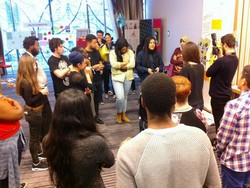New hope for European youth
Recent financial crises have disproportionately affected European youth, many of whom are substantially disadvantaged compared to previous generations. Policy responses are generally founded in obsolete concepts; thus, a general re-think is overdue, and should particularly include the ideas of young people. The EU-funded CITISPYCE(opens in new window) (Combating inequalities through innovative social practices of, and for, young people in cities across Europe) project investigated. The 13-member consortium considered how policymakers might tackle inequalities by incorporating innovative strategies either devised for young people or created by them. Other tasks included describing the nature of the inequalities, testing the transferability of local models and making policy recommendations. The study also addressed the resources needed to achieve such outcomes. Initial work focused on establishing a conceptual framework for a baseline study. The team then examined the broad-scale symptoms and causes of youth inequalities across 10 European countries. Reports from the various jurisdictions provided data for a comparative analysis. The analysis illustrated the importance of differentiating symptoms from causes, and identified seven potentially addressable causes of inequality. The causes were considered in two case study areas for each city, yielding an overall comparison of policy frameworks. Hence, the project determined variables apparently important in all cases: distance, as related to isolation; decay and neglect of certain places; and ineffective policy responses. Micro-level investigations, involving 445 interviews and 26 focus groups, captured young people's own experiences and solutions. The project showed a grim picture, but also some limited signs of innovation. The CITISPYCE project has contributed to the understanding of the causes and effects of youth inequality in Europe. A number of innovative responses have been documented, some of which may ultimately help overcome widespread feelings of hopelessness.







